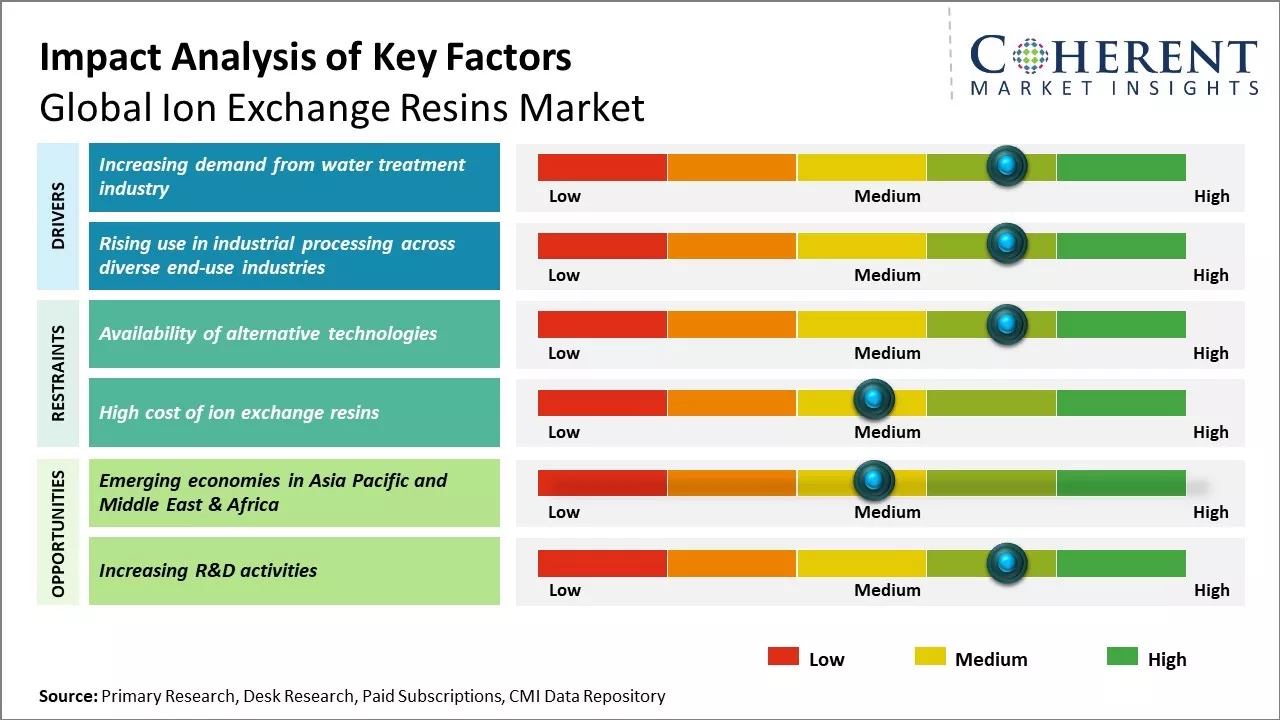The ion exchange resins market is estimated to be valued at USD 1.62 Bn in 2025 and is expected to reach USD 2.28 Bn by 2032, exhibiting a compound annual growth rate (CAGR) of 5.0% from 2025 to 2032.

To learn more about this report, Request sample copy
The ion exchange resins market is expected to witness substantial growth over the forecast period. The increasing demand from various end-use industries such as power, chemical & petrochemical, food & beverage, pharmaceutical, mining & metallurgy, and others is expected to drive the market growth during the forecast period. Ion exchange resins are mainly used in the regeneration process of water purification systems which is gaining importance due to increasing water pollution. Additionally, ion exchange resins have wide applications in the production of numerous drugs and medicines which is further supporting the market growth. However, the availability of cost-effective substitutes and stringent regulations regarding the use of ion exchange resins may hamper the market growth during the forecast period.
Increasing demand from water treatment industry
The water treatment industry has been experiencing substantial growth over the past few years driven by increasing concerns over water scarcity and rising pollution levels globally. With growing population and rapid urbanization, the demand for clean and potable water is continuously rising. This has propelled investments in water processing, reuse, and desalination plants across countries. Ion exchange resins play a crucial role in various stages of industrial and municipal water treatment processes by removing dissolved impurities and ions. They are extensively used for the purification of raw water sources, production of ultrapure water for industrial applications, water softening, process stream polishing, and effluent treatment.
In particular, demand from seawater desalination has significantly contributed to the growing consumption of ion exchange resins. With drought becoming a recurring problem, many coastal cities and towns are looking at desalination as a reliable and sustainable source of freshwater. Several large desalination plants based on reverse osmosis technology have come online in the Middle East, North Africa, and California in recent times. Reverse osmosis membranes require pre-treatment of feed water to remove salinity, hardness, organic compounds and particles, for which ion exchange resins play a critical pre-treatment role. Their use helps prolong the lifespan of desalination membranes and enhances overall plant efficiency.
Joining thousands of companies around the world committed to making the Excellent Business Solutions.
View All Our Clients